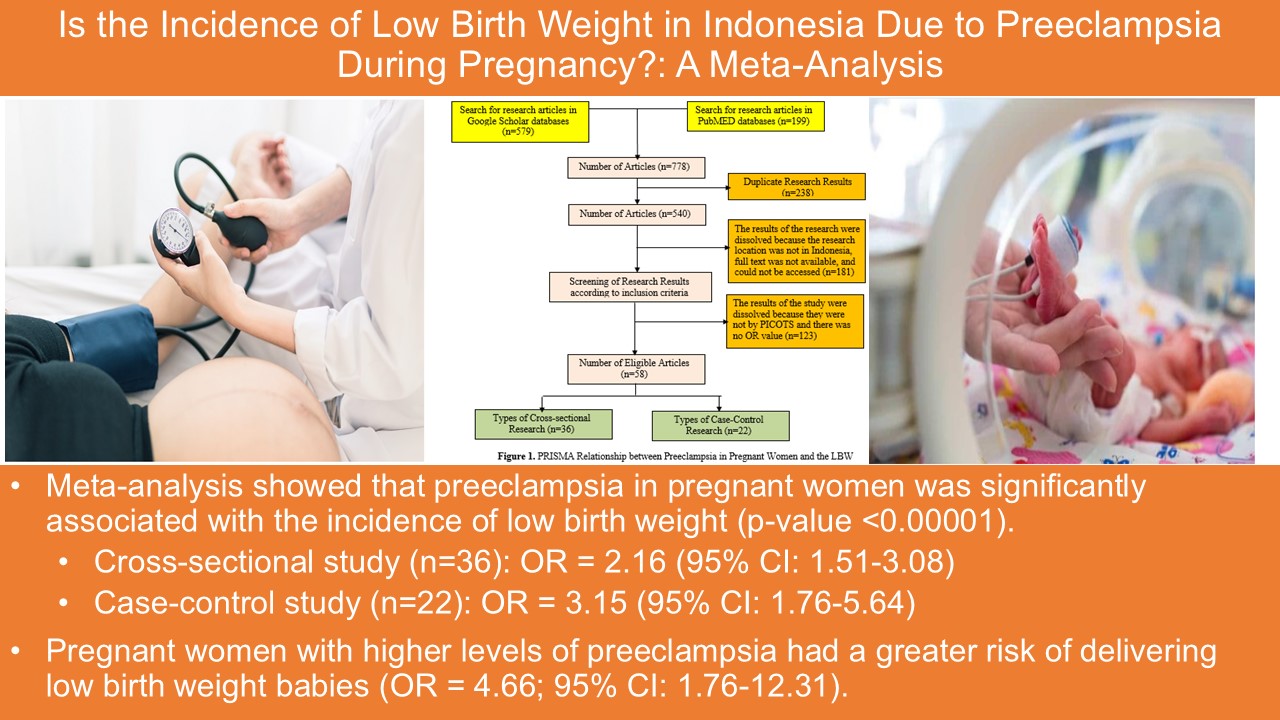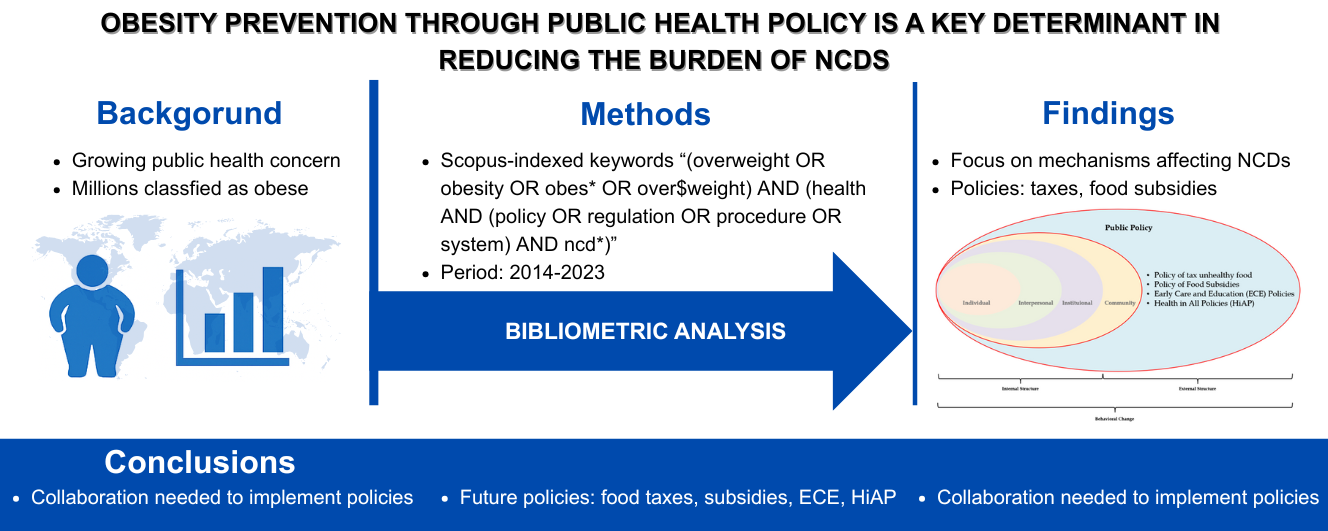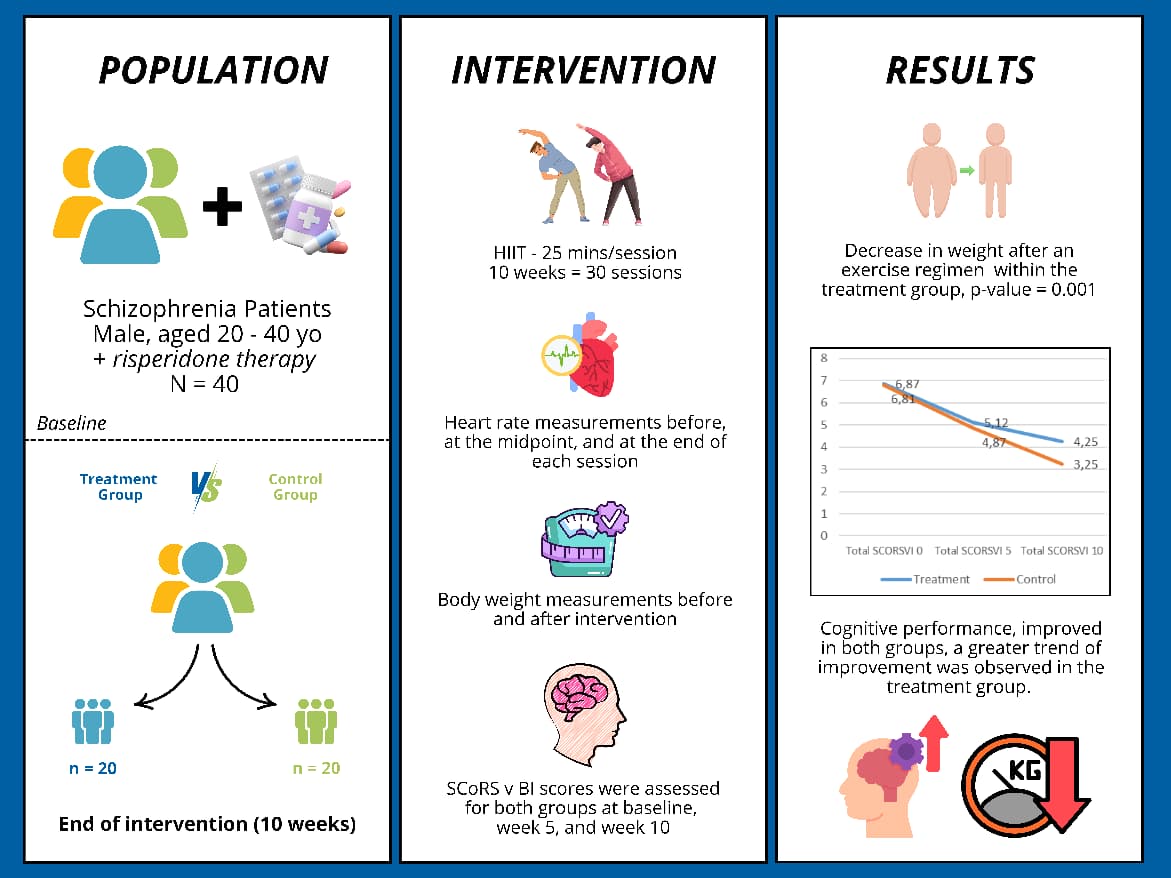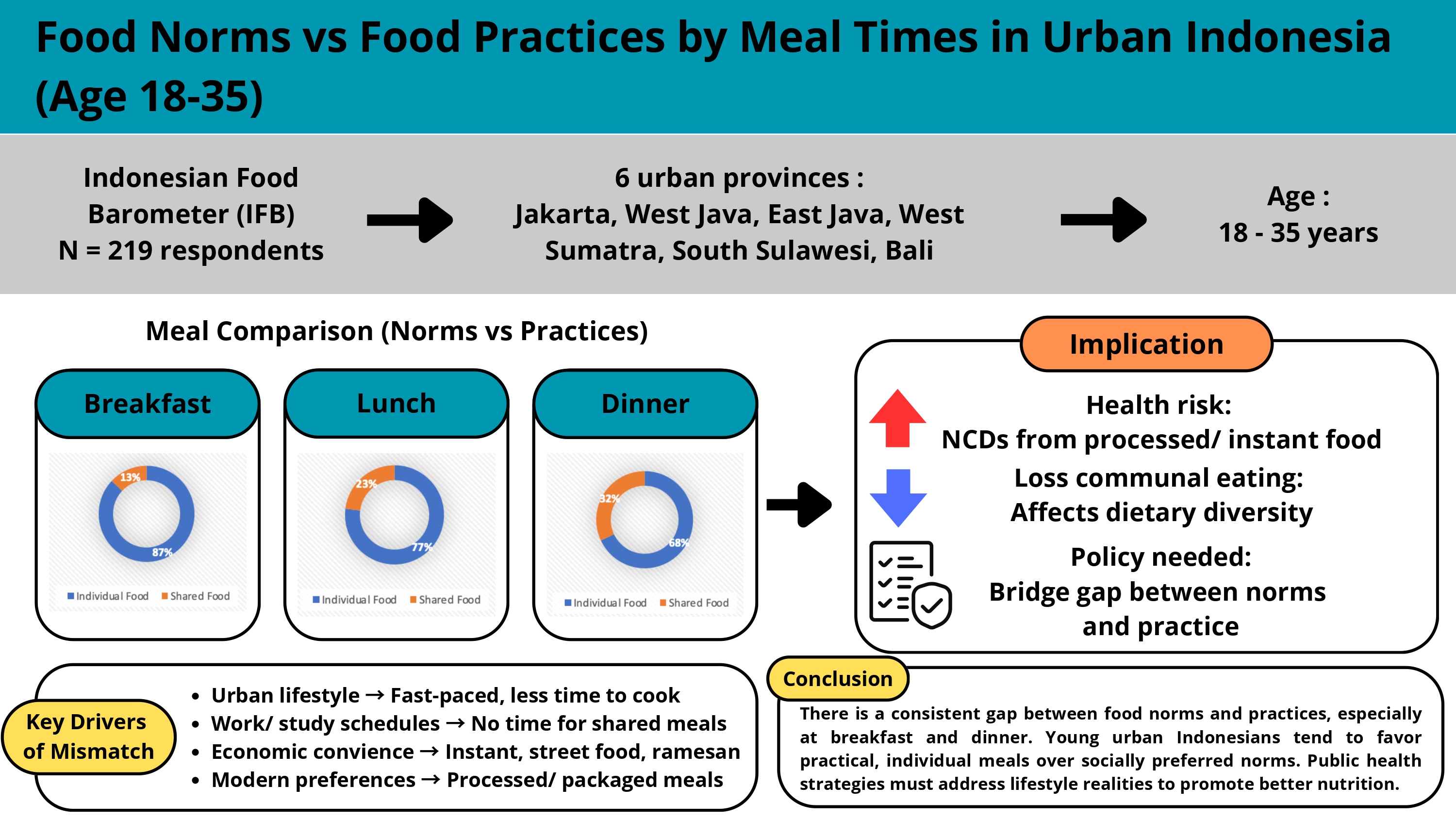THE EFFECT DIFFERENCES OF 30-MINUTES VERSUS 60-MINUTES TELE-EXERCISE ON FITNESS LEVEL OF OBESE EMPLOYEES
Downloads
The ongoing COVID-19 pandemic causes lower physical activity while exercise intensity also decreases. At the same time, the stress level is increasing, causing low physical fitness level. Due to the importance of human health and company cost to increase their employees' physical fitness level, and with regard to the limited time of office employees, this research aimed to analyze the effect of tele-exercise duration on the fitness level of obese employees. The design of this study was pre-posttest quasi-experimental design. The subjects of this research were male and female obese employees, aged 18-45 years old, from Fast Moving Consumer Goods (FMCG) company in Jakarta, Indonesia. Subjects then were randomly assigned to a 30-minutes exercise session group (n = 20) or 60-minutes exercise session group (n = 19). Statistical analysis included paired t-test and independent t-test to analyze differences between groups. All aspects of fitness analyzed in this study (strength, flexibility, and cardiorespiratory endurance) were increased in both groups significantly (p<0.05). It was shown that 60-minutes exercise sessions improve overall aspects of fitness better than 30-minutes exercise sessions, except for cardiovascular fitness (VO2 Max). Using an independent t-test, there were no significant differences between 30-minute and 60-minute exercise sessions in terms of mean changes (p>0.05). This study showed that tele-exercise, even if it is done in a short period, 30-minute duration, may improve the overall aspect of fitness level significantly for obese employees. Moreover, in this pandemic time, this kind of program is a better alternative than face-to-face, direct exercise intervention.
Almandoz, J. P., Xie, L., Schellinger, J. N., Mathew, M. S., Gazda, C., Ofori, A., Kukreja, S., & Messiah, S. E. (2020). Impact of COVID-19 stay-at-home orders on weight-related behaviours among patients with obesity. Clinical Obesity, 10(5), e12386.
Andersen, L. L., Andersen, C. H., Mortensen, O. S., Poulsen, O. M., Bjí¸rnlund, I. B. T., & Zebis, M. K. (2010). Muscle activation and perceived loading during rehabilitation exercises: comparison of dumbbells and elastic resistance. Physical Therapy, 90(4), 538–549.
Bachmann, J. M., DeFina, L. F., Franzini, L., Gao, A., Leonard, D. S., Cooper, K. H., Berry, J. D., & Willis, B. L. (2015). Cardiorespiratory fitness in middle age and health care costs in later life. Journal of the American College of Cardiology, 66(17), 1876–1885.
Bandy, W. D., Irion, J. M., & Briggler, M. (1997). The effect of time and frequency of static stretching on flexibility of the hamstring muscles. Physical Therapy, 77(10), 1090–1096.
Bile, R. L., & Suharharjana, S. (2019). Efektivitas penggunaan model latihan kebugaran "Bbc Exercise” untuk pemeliharaan kebugaran jasmani mahasiswa. SPORTIVE: Journal of Physical Education, Sport and Recreation, 3(1), 30–37.
Decoster, L. C., Cleland, J., Altieri, C., & Russell, P. (2005). The effects of hamstring stretching on range of motion: a systematic literature review. Journal of Orthopaedic & Sports Physical Therapy, 35(6), 377–387.
Feland, J. B., Myrer, J. W., Schulthies, S. S., Fellingham, G. W., & Measom, G. W. (2001). The effect of duration of stretching of the hamstring muscle group for increasing range of motion in people aged 65 years or older. Physical Therapy, 81(5), 1110–1117.
Garber, C. E., Blissmer, B., Deschenes, M. R., Franklin, B. A., Lamonte, M. J., Lee, I.-M., Nieman, D. C., & Swain, D. P. (2011). Quantity and quality of exercise for developing and maintaining cardiorespiratory, musculoskeletal, and neuromotor fitness in apparently healthy adults: guidance for prescribing exercise.
Guissard, N., & Duchateau, J. (2004). Effect of static stretch training on neural and mechanical properties of the human plantar-flexor muscles. Muscle & Nerve: Official Journal of the American Association of Electrodiagnostic Medicine, 29(2), 248–255.
Hale, R., Green, J., Hausselle, J., Saxby, D., & Gonzalez, R. v. (2018). Quantified in vitro tibiofemoral contact during bodyweight back squats. Journal of Biomechanics, 79, 21–30.
Hayden, J. A., van Tulder, M. W., Malmivaara, A. v, & Koes, B. W. (2005). Meta-analysis: exercise therapy for nonspecific low back pain. Annals of Internal Medicine, 142(9), 765–775.
Heyward, V. H. (1997). Advance Fitness Assessment & Exercise Prescription (3rd ed.). Human Kinetics.
Hong, J., Kim, J., Kim, S. W., & Kong, H. J. (2017). Effects of home-based tele-exercise on sarcopenia among community-dwelling elderly adults: Body composition and functional fitness. Experimental Gerontology. https://doi.org/10.1016/j.exger.2016.11.002
Ilmarinen, J. E. (2001). Aging workers. Occupational and Environmental Medicine, 58(8), 546.
International Fitness Association. (2004). IFA Fitness Testing Table.
Irianto, D. P. (2007). Panduan gizi lengkap keluarga dan olahragawan.
Katzmarzyk, P. T., & Janssen, I. (2004). The economic costs associated with physical inactivity and obesity in Canada: an update. Canadian Journal of Applied Physiology, 29(1), 90–115.
Knaeps, S., Bourgois, J. G., Charlier, R., Mertens, E., Lefevre, J., & Wijndaele, K. (2018). Ten-year change in sedentary behaviour, moderate-to-vigorous physical activity, cardiorespiratory fitness and cardiometabolic risk: independent associations and mediation analysis. British Journal of Sports Medicine, 52(16), 1063–1068.
Kraemer, W. J., Adams, K., Cafarelli, E., Dudley, G. A., Dooly, C., Feigenbaum, M. S., Fleck, S. J., Franklin, B., Fry, A. C., Hoffman, J. R., & others. (2002). American College of Sports Medicine position stand. Progression models in resistance training for healthy adults. Medicine and Science in Sports and Exercise, 34(2), 364–380.
Kramer, A. F., & Erickson, K. I. (2007). Capitalizing on cortical plasticity: influence of physical activity on cognition and brain function. Trends in Cognitive Sciences, 11(8), 342–348.
Kuswari, M., Rimbawan, R., Hardinsyah, H., Dewi, M., & Gifari, N. (2022). Effects of Tele-Exercise and Nutrition Tele-Counselling on Fitness Level of Obese Employee during COVID-19 Pandemic Time. JUARA: Jurnal Olahraga, 7(1), 138–150.
Lee, I.-M., Rexrode, K. M., Cook, N. R., Manson, J. E., & Buring, J. E. (2001). Physical activity and coronary heart disease in women: is no pain, no gain passé? Jama, 285(11), 1447–1454.
Lipecki, K., & Rutowicz, B. (2015). The impact of ten weeks of bodyweight training on the level of physical fitness and selected parameters of body composition in women aged 21-23 years. Polish Journal of Sport and Tourism, 22(2), 64–68.
Manson, J. E., Greenland, P., LaCroix, A. Z., Stefanick, M. L., Mouton, C. P., Oberman, A., Perri, M. G., Sheps, D. S., Pettinger, M. B., & Siscovick, D. S. (2002). Walking compared with vigorous exercise for the prevention of cardiovascular events in women. New England Journal of Medicine, 347(10), 716–725.
Nelson, M. E., Rejeski, W. J., Blair, S. N., Duncan, P. W., Judge, J. O., King, A. C., Macera, C. A., & Castaneda-Sceppa, C. (2007). Physical activity and public health in older adults: recommendation from the American College of Sports Medicine and the American Heart Association. Circulation, 116(9), 1094.
Pan, W.-H., & Yeh, W.-T. (2008). How to define obesity? Evidence-based multiple action points for public awareness, screening, and treatment: an extension of Asian-Pacific recommendations. Asia Pacific Journal of Clinical Nutrition, 17(3), 370.
Pollock, M. L., Gaesser, G. A., Butcher, J. D., Després, J. P., Dishman, R. K., Franklin, B. A., & Garber, C. E. (1998). The recommended quantity and quality of exercise for developing and maintaining cardiorespiratory and muscular fitness, and flexibility in healthy adults. Medicine and Science in Sports and Exercise, 30(6), 975–991.
Porter, D., Barrill, E., Oneacre, K., & May, B. D. (2002). The effects of duration and frequency of Achilles tendon stretching on dorsiflexion and outcome in painful heel syndrome: a randomized, blinded, control study. Foot & Ankle International, 23(7), 619–624.
Prativi, G. O., & others. (2013). Pengaruh Aktivitas Olahraga terhadap Kebugaran Jasmani. Journal of Sport Science and Fitness, 2(3).
Proper, K. I., den Heuvel, S. G., de Vroome, E. M., Hildebrandt, V. H., & der Beek, A. J. (2006). Dose--response relation between physical activity and sick leave. British Journal of Sports Medicine, 40(2), 173–178.
Qin, F., Song, Y., Nassis, G. P., Zhao, L., Cui, S., Lai, L., Wu, Z., Xu, M., Qu, C., Dong, Y., & others. (2020). Prevalence of insufficient physical activity, sedentary screen time and emotional well-being during the early days of the 2019 novel coronavirus (COVID-19) outbreak in China: a national cross-sectional study.
Ramsbottom, R., Brewer, J., & Williams, C. (1988). A progressive shuttle run test to estimate maximal oxygen uptake. British Journal of Sports Medicine, 22(4), 141–144.
Rees, S. S., Murphy, A. J., Watsford, M. L., McLachlan, K. A., & Coutts, A. J. (2007). Effects of proprioceptive neuromuscular facilitation stretching on stiffness and force-producing characteristics of the ankle in active women. Journal of Strength and Conditioning Research, 21(2), 572.
Schmier, J. K., Jones, M. L., & Halpern, M. T. (2006). Cost of obesity in the workplace. Scandinavian Journal of Work, Environment & Health, 5–11.
Sesso, H. D., Paffenbarger Jr, R. S., & Lee, I.-M. (2000). Physical activity and coronary heart disease in men: The Harvard Alumni Health Study. Circulation, 102(9), 975–980.
Tanasescu, M., Leitzmann, M. F., Rimm, E. B., Willett, W. C., Stampfer, M. J., & Hu, F. B. (2002). Exercise type and intensity in relation to coronary heart disease in men. Jama, 288(16), 1994–2000.
ten Velde, G., Lubrecht, J., Arayess, L., van Loo, C., Hesselink, M., Reijnders, D., & Vreugdenhil, A. (2021). Physical activity behaviour and screen time in Dutch children during the COVID-19 pandemic: Pre-, during-and post-school closures. Pediatric Obesity, e12779.
Trost, S. G., Owen, N., Bauman, A. E., Sallis, J. F., & Brown, W. (2002). Correlates of adults' participation in physical activity: review and update. Medicine & Science in Sports & Exercise, 34(12), 1996–2001.
Wagner, B. E., Folk, A. L., Hahn, S. L., Barr-Anderson, D. J., Larson, N., & Neumark-Sztainer, D. (2021). Recreational screen time behaviors during the COVID-19 pandemic in the US: A mixed-methods study among a diverse population-based sample of emerging adults. International Journal of Environmental Research and Public Health, 18(9), 4613.
Wernbom, M., Augustsson, J., & Thomeé, R. (2007). The influence of frequency, intensity, volume and mode of strength training on whole muscle cross-sectional area in humans. Sports Medicine, 37(3), 225–264.
Willy, R. W., Kyle, B. A., Moore, S. A., & Chleboun, G. S. (2001). Effect of cessation and resumption of static hamstring muscle stretching on joint range of motion. Journal of Orthopaedic & Sports Physical Therapy, 31(3), 138–144.

This work is licensed under a Creative Commons Attribution-NonCommercial-ShareAlike 4.0 International License.
- MEDIA GIZI INDONESIA Journal is the copyright owner of all materials published on this website.
- The formal legal provisions for access to digital articles of this electronic journal are subject to the terms of the Creative Commons Attribution-NonCommercial-ShareAlike license (CC BY-NC-SA 4.0), which means that MEDIA GIZI INDONESIA Journal and readers reserve the right to save, transmit media / format, manage in database, maintain, and publish articles as long as it continues to include the name of the Author.
- Printed and published print and electronic manuscripts are open access for educational, research and library purposes. In addition to these objectives, the editorial board shall not be liable for violations of copyright law.


2.png)





















